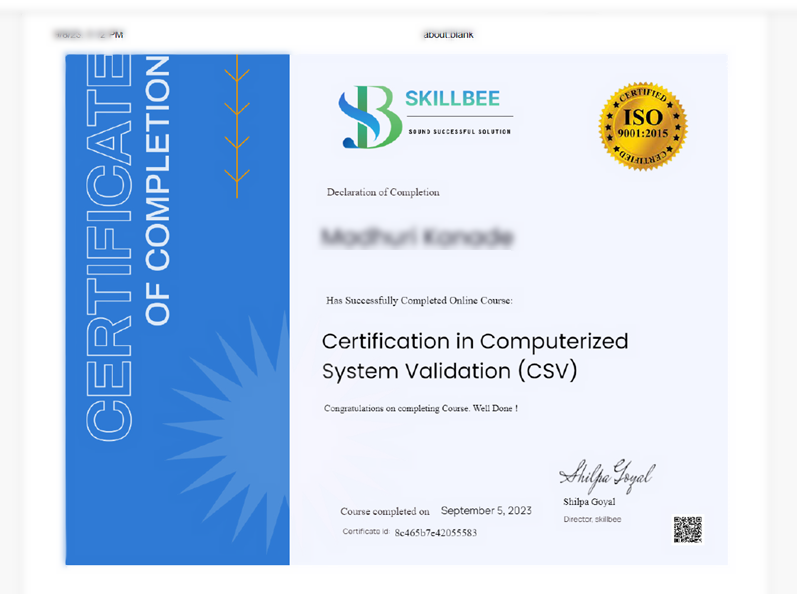
Nov 16
Artificial Intelligence, Machine learning and CSV Approach
Approach for validating computerized systems in the context of
artificial intelligence and machine learning involves a
comprehensive and rigorous process to ensure the accuracy,
reliability, and effectiveness of these systems. Validating
...Read more
Artificial Intelligence, Machine learning and CSV Approach
Approach for validating computerized systems in the context of
artificial intelligence and machine learning involves a
comprehensive and rigorous process to ensure the accuracy,
reliability, and effectiveness of these systems. Validating
computerized systems in the context of artificial intelligence
and machine learning is essential to ensure that these systems
can perform their intended functions and produce reliable and
trustworthy results. One important aspect of validating
computerized systems in the context of artificial intelligence
and machine learning is the need for extensive testing. Testing
is a critical step in the validation process as it allows for
the identification of any errors or issues that may arise during
the operation of the system. This testing can involve various
techniques such as unit testing, integration testing, and system
testing, to name a few. In addition to testing, another crucial
step in validating computerized systems in the context of
artificial intelligence and machine learning is the use of
validation data sets. Validation data sets are a collection of
data that is used to evaluate the performance of the system and
to ensure that it produces accurate and reliable results. These
data sets can be created using a variety of techniques, such as
manual data collection, data synthesis, or data augmentation.
Furthermore, it is important to consider the ethical
implications of validating computerized systems in the context
of artificial intelligence and machine learning. As these
systems become more advanced and capable, it is crucial to
ensure that they are used in an ethical and responsible manner.
This involves addressing issues such as bias, fairness,
transparency, and privacy in the design and validation process.
To enhance the validation process, it is also beneficial to
involve domain experts and stakeholders in the validation
process. Domain experts can provide valuable insights and
expertise in evaluating the performance and functionality of the
system. Stakeholders, on the other hand, can provide input on
the requirements and expectations for the system, ensuring that
it meets the needs of the intended users. In conclusion, the
approach for validating computerized systems in the context of
artificial intelligence and machine learning is a comprehensive
and rigorous process that involves testing, validation data
sets, ethical considerations, involvement of domain experts and
stakeholders, and more. By following this approach, we can
ensure that these systems are accurate, reliable, and effective
in their intended functions. To get more detail on Artificial
Intelligence and machine learning validation approach Join our
Computerized Systems Validation Course by click link
https://buff.ly/40Kt0zJ




